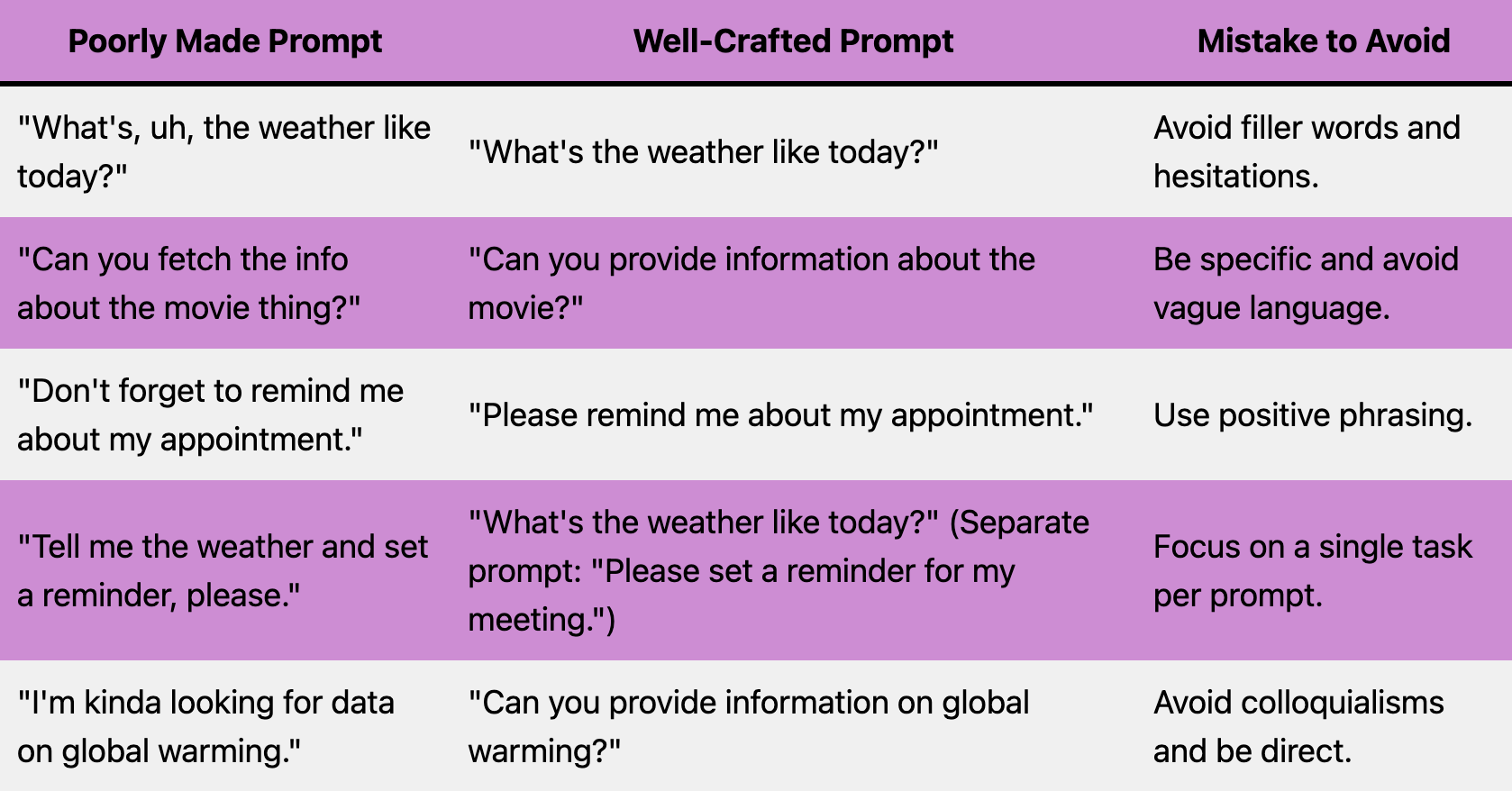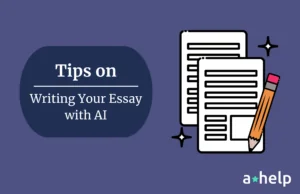In the constantly evolving world of artificial intelligence (AI), the ability to write effective prompts is becoming increasingly important. Whether you’re interacting with a chatbot, using a language model, or working with any other AI system, the quality of your prompts can significantly impact the responses you receive. With this article, we aim to provide a comprehensive guide on how to write good AI prompts, ensuring clear and concise communication with AI systems.

✅ AI Essay Writer ✅ AI Detector ✅ Plagchecker ✅ Paraphraser
✅ Summarizer ✅ Citation Generator
What are AI prompts Anyway and Why do We Need Them to be Good?
AI prompts are the inputs or instructions given to an AI system to generate a specific response or action. These prompts can range from simple commands to more complex queries or statements, depending on the capabilities of the AI and the desired outcome. Crafting stellar prompts is necessary for effective AI interactions, as they guide the AI in understanding user intent and delivering relevant results.
AI systems rely on prompts to interpret and respond to user requests. A well-crafted prompt provides clear and brief instructions, allowing the AI to process the information accurately and efficiently. Good prompts help minimize misunderstandings and errors, leading to more satisfying and productive AI interactions.
AI Prompt Writing Checklist – What You Need to Know Before Starting Writing Your Prompt
Before creating AI prompts, you need to arm yourself with a complete understanding of the task at hand. A well-prepared checklist can serve as a guide, making your prompts not simply effective but also aligned with your goals and the capabilities of the AI system. Here’s a detailed AI Prompt Writing Checklist to consider:
- Understand the AI’s capabilities and limitations – familiarize yourself with the AI system you’re interacting with. Different AI models have varying strengths and weaknesses, and understanding these can significantly impact the effectiveness of your prompts.
- Define your objectives and what you hope to achieve with the prompt – take a moment to clarify what you aim to accomplish with your interaction. Are you seeking information, looking for a solution to a problem, or perhaps trying to generate creative content? With a straightforward objective in mind will help you construct focused and direct prompts.
- Consider the context in which the prompt will be used – take into account the environment, the audience, and the specific application of the AI system to make your prompts appropriate and effective.
- Keep the language clear and straightforward – use clear, simple language and avoid jargon or overly complex phrases. The goal is to communicate your request as plainly as possible, minimizing the risk of misunderstandings. A well-structured prompt should leave little room for ambiguity, allowing the AI to accurately process your request.
Keep these points in mind and follow this checklist. With its help, you’ll be better equipped to write AI prompts that are clear, focused, and effective in achieving your desired outcomes.
A Simple Guide to Writing Effective AI Prompts
As we have established, a well-crafted prompt can lead to a more accurate and satisfying response from the AI system. We ran through the checklist, so let’s now take a look at the detailed guide that will help you write prompts to facilitate clear and effective communication:
Talk to the AI like you would talk to a person
When crafting prompts, approach the AI as if you’re talking to a human. Use natural language, maintain a polite tone, and avoid overly technical jargon. This fosters a more intuitive interaction and allows the AI to better understand your requests.

Set the stage and provide context (give the model an Identity if needed)
Give the AI enough background information to understand the situation. If necessary, assign the model an identity or role to help it interpret the prompt more accurately. For instance, if you’re asking for travel advice, you might introduce the AI as a travel expert by saying,
“As a travel expert, can you recommend some must-visit places in Paris?”
Keep It Simple and Direct
Clarity is key when creating AI book writing prompts. Use simple, direct language and avoid ambiguity. Be specific about what you’re asking for, and don’t overload the prompt with unnecessary details. This makes the AI process your request efficiently and provide a relevant response.
Instead of saying “I’m wondering if you could possibly provide me with the current time,”
Simply ask, “What’s the current time?”
Single Tasks Only
Focus on one task or question per prompt. Overloading your instruction with multiple requests can confuse the AI and lead to unsatisfactory responses. If you have several tasks, break them down into separate prompts to clear and focus your interactions. For example:
Instead of asking “What’s the weather like today, and can you also set a reminder for my meeting at 3 PM?”
Split it into two prompts: “What’s the weather like today?” and “Can you set a reminder for my meeting at 3 PM?”
Don’t use negative phrases
Avoid using negative phrases or overly complex language in your prompts. Negative phrases can be confusing for AI systems and may lead to misunderstandings. Instead, structure your requests positively and clearly, so that the AI can interpret them correctly. For example:
Insted of “Don’t forget to remind me about my appointment.”
Say “Please remind me about my appointment.”
Common Mistakes to Avoid When Writing AI Prompts
Writing AI prompts requires precision and clarity, but it’s easy to fall into common pitfalls that can lead to confusing or unsatisfactory responses. To build effective communication with AI systems, you have to consider and try to avoid these mistakes. Here’s a table chart comparing examples of well-crafted and poorly-made prompts, highlighting common errors to steer clear of:

By dodging these common mistakes and following the guidelines for writing effective prompts, you can enhance your interactions with AI systems and achieve more accurate and useful responses.
Conclusion
Writing effective AI prompts is an art that requires understanding the AI’s capabilities, clear communication, and a focus on simplicity and context. We hope the guidelines outlined in this article, will help you build prompts that lead to more productive and satisfying interactions with essay ai generator systems. Remember to experiment and iterate on your prompts, as this process will help you refine your approach and achieve better results over time.
FAQ
Follow us on Reddit for more insights and updates.





Comments (0)
Welcome to A*Help comments!
We’re all about debate and discussion at A*Help.
We value the diverse opinions of users, so you may find points of view that you don’t agree with. And that’s cool. However, there are certain things we’re not OK with: attempts to manipulate our data in any way, for example, or the posting of discriminative, offensive, hateful, or disparaging material.